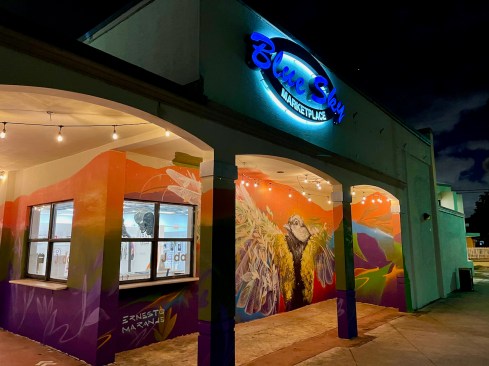Project Description
Designing a space to showcase art presents a unique challenge: you’ve got to avoid overpowering the artwork within, while creating a unique and engaging space that complements the art on display. Add to that challenge the contemporary limitations imposed by COVID 19, and you’ve got your work cut out for you—for example, directing the flow of one-way traffic in a way that facilitates social distancing through an open-air, well-ventilated interior.
This is what the firm of REINES & STRAZ faced in their recent project for Miami Art Week, which involved transforming an abandoned building in disrepair into a pop-up gallery by Jada Art to showcase the works of international artists—all on a limited budget.
Thankfully they found some helpful precedents in the work of Finnish architect Alvar Aalto. The broken massing of Aalto’s 1958 design for the Museum of Fine Art in Baghdad gave them the idea to stagger entrances to four separate gallery spaces, providing an inviting visual snippet of each one from the sculpture-filled entry hall. The stepped floor plan of galleries not only gave each gallery its own prominent space, but created an easy to follow footpath for visitors to walk and admire the artwork on display—without running afoul of social distancing requirements.
Additionally, compartmentalizing the experience into four separate galleries increased the wallspace and facilitated more opportunities for artists to display their work. The gallery spaces comprised 5,000 square feet of the 7,000 square foot building to showcase a diverse range of mixed media: paintings, drawings, sculptures, installation art, and video pieces. Just by compartmentalizing the floor plan, a space barely bigger than two average-sized residences became able to accommodate a staggering number of artworks.
The pop-up art gallery transformed an abandoned and dilapidated building that had become a community eyesore—a once thriving local market with a colonial fountain gracing the interior. With a limited budget for the project, elements like the terracotta tiled floor remained, nodding to the building’s original purpose and heightening a sense of transience in regards to the artwork on display, which was part of an annual art festival.
The layout of the gallery also provided a space for artists to deliver socially-distanced talks and presentations on their work, allowing the community to come together and enjoy art, even in these challenging times. In fact, since most art fairs went virtual this year, the gallery facilitated Miami Art Week’s largest in-person event, showcasing artists from all over the world—thanks to the creative spatial layout by REINES & STRAZ, which facilitated a COVID-safe, in-person art event.
The exterior arcade of the building is now graced with a colorful mural by local artist Ernesto Maranje, so that even after Miami Art Week, the gallery itself will remain an artistic focalpoint in the neighborhood.

